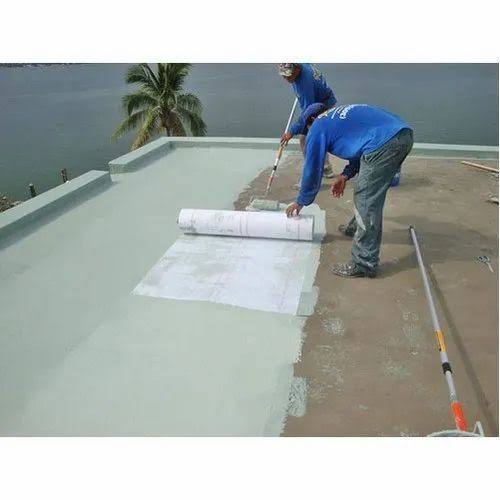Waterproofing is a very critical building maintenance and construction activity that assures long-lasting protection against water intrusion and damage. Not every waterproofing solution, however, is created alike, and when it comes to choosing proper techniques and materials, understanding the difference between “waterproof” and “water-resistant” may become crucial. The guide describes the differences, studies the science behind waterproofing, and explores why effective techniques are crucial in places like Pune and Mumbai, where seasonal rains and humidity pose significant challenges.
While many people use the terms “waterproof” and “water-resistant” interchangeably, they refer to two different levels of protection. Water-resistant materials can repel water to one extent or another, keeping it from being immediately absorbed. They are effective in areas that present only minor exposure to water but will not survive under heavy rain or constant moisture exposure. Unlike water-resistant materials, waterproof materials provide a complete seal that keeps the elements at bay and, therefore, are perfect for those surfaces that have exposure to water on either a regular or continuous basis.
Buildings like Pune and Mumbai, which witness heavy rains in monsoon seasons, often require waterproofing rather than water resistance for better reliability. Accordingly, the right level of protection can avoid costly repairs and enhance the durability of the property, ensuring a safe and dry environment indoors.
Pune has to put up with a lot of climatic variations which range from hot and dry spells to torrents of rain during the monsoon. Effective waterproofing methods must address these fluctuations in climate and offer protection that best suits local needs. One very effective solution for the climatic conditions in Pune is cementitious waterproofing. This is one of the popular waterproofing methods whereby a durable cement-based coating is applied on walls and roofs. It acts as an impassable layer to water, hence one can be assured that even at times of heavy rainfall, water will not leak through it.
Other techniques suggested include the bituminous coating method, which offers a flexible and somewhat rubbery layer to act as a water barrier. Bituminous coating is highly effective in waterproofing rooftops and foundations. Liquid membrane coatings are likewise popular because of their tough nature and adaptability to various surfaces, especially for flat roofs and terraces that bear heavy rain in Pune. The property owners can therefore use the best waterproofing technique in Pune to prevent structural damage, damp walls, and the growth of molds, for good so that it can extend the lives of their buildings.
The proximity of Mumbai to the sea and its high humidity level creates problems of a different kind. Here, the building structure is mostly exposed to rainwater and salt-laden air, which can rapidly deteriorate the construction materials. Proper waterproofing solutions will have to prevent ingress of water and be resistant to the effects of salts and humidity.
The polyurethane liquid membrane is among the options widely applied by Mumbai residents; it has a highly flexible, seamless membrane. The flexible aspect is an important one as it allows it to give way to cracks that happen due to shifting of buildings, and this is a common phenomenon at high levels of humidity in the atmosphere. Some experts suggest epoxy-based waterproofing, which is highly durable and wonderfully applicable to damp-prone basement and parking areas.
Expert waterproofing advice in Mumbai requires seeking professionals who understand the city’s climate and common building materials used therein. Professionals can guide on materials that resist water and salt, ensuring the structure can bear the dual impacts of coastal weather and heavy monsoon rains. With the right approach, Mumbai residents can safeguard their homes against leakages, seepage, and relentless wear by environmental factors.
Any project involves selecting waterproofing materials, depending on the nature of exposure to moisture, which is related to the location of the place. The application of cement-based products to masonry and concrete structures creates a perfect bonding that is resistant to water penetration. Polyurethane or bituminous membranes work in a better way when applied to surfaces needing flexibility, such as roofs that are facing expansion and contraction due to temperature fluctuations. The reason behind this is that each material has its positive qualities and understanding the specific structure will guide through the selection process.
Besides the material, it is the method of application that makes much difference. Adequate surface preparation, such as cleaning and priming, can make waterproof treatments much more effective. The treatments form resilient layers, acting to serve as barriers in keeping moisture at bay for many years when applied with thoroughness. Yes, waterproofing does cost upfront, but after a certain period, it pays off. Where proper waterproofing is not provided, the building will always be plagued with cracks, leakages, and mold that soon develop into serious structural defects. The cost of repair for the damage is usually much higher than preventive waterproofing measures would have been. Moreover, waterproofing ensures the protection of the physical integrity of a building and provides a healthy indoor climate devoid of mold and dampness.
With cities like Pune and Mumbai getting heavy rainfall, eventually leading to water damage, a higher cost initially spent on waterproofing can save a lot of headaches and money for homeowners and property managers. By doing so, with proper techniques and materials applied, one can enhance the durability and value of the property to make sure it stays resilient against water damage.

